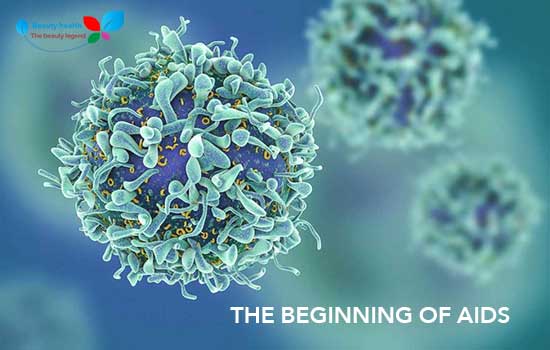The beginning of AIDS
The beginning of AIDS
The beginning of AIDS | How HIV arises and what its symptoms are and how it is transmitted to humans and when AIDS appears by analyzing blood and what are the symptoms of AIDS in the mouth and what are its definite symptoms
The beginning of AIDS:
How HIV arises, what its symptoms are, how it is transmitted to humans, when AIDS appears by analyzing blood, what are the symptoms of AIDS in the mouth, what are its definite symptoms, when the AIDS patient dies and what symptoms appear at the beginning of AIDS.
AIDS is a chronic, life-threatening condition caused by HIV.By damaging the immune system, HIV also interferes with the body’s ability to fight infection and disease.
What is HIV?
It is a sexually transmitted infection, and the HIV virus can spread through contact with infected blood or from mother to child during pregnancy, childbirth or breastfeeding.
. IT MAY ALSO TAKE YEARS BEFORE YOUR IMMUNE SYSTEM WEAKENS AND AIDS OCCURS.
There is also no cure for HIV(AIDS), but drugs can significantly slow the progression of the disease.
These drugs have reduced idher deaths in many developed countries.
What are the symptoms that appear at the onset of AIDS?
It is known that the symptoms of HIV (AIDS) vary, depending on the stage of infection.
Primary infection (acute HIV):
People living with HIV develop flu-like symptoms within two to four weeks after the virus enters the body.
This infection may last for a few weeks, and as symptoms and possible signs include:
- A fever.
- Headache in the head.
- Muscle and joint pain.
- Rash.
- Sore throat and painful mouth ulcers.
- Bulging lymph nodes, especially on the neck.
- Diarrhea.
- Weight loss.
- Cough.
- Night sweats.
These symptoms can also be so mild that you may not notice them, however, the amount of the virus in the bloodstream (viral load) is very high” at this time.
As a result, the infection spreads more easily during the initial infection than in the next stage.
Clinical underlying infection (chronic HIV):
At this stage of the immunodeficiency fios, the fissus remains latent in the body and in the white blood cells. The injured people may also show no symptoms during this time.
This stage can also continue for many years, and if no antiviral treatment is received, the severity of the disease can increase much sooner.
As the virus continues to multiply and destroy immune cells in addition to cells in your body that help fight germs may become a mild infection or chronic signs and symptoms including:
- The fever.
- I’m tired.
- Enlarged lymph nodes – often one of the first signs of HIV infection.
- Diarrhea.
- Thrush (yeast infection in the mouth)
- Shingles (shingles).
- Pneumonia.
Progress to AIDS:
Thanks to antiviral treatments, most people living with HIV are not infected with AIDS.
But if not treated, HIV usually turns to AIDS in about 8-10 years.
When you have AIDS, your immune system is severely damaged and you’re more likely to develop opportunistic infections or opportunistic cancers.
It is a disease that does not usually cause disease” for a person with a healthy immune system.
Signs and symptoms of some of these infections may also include:
- Sweating.
- Chills.
- Recurrent fever.
- Chronic diarrhea.
- Swelling of the lymph nodes.
- Fixed white spots or unusual lesions on your tongue or mouth.
- Persistent and unjustified fatigue.
- Weight loss.
- Rash or bumps.
How does HIV turn to AIDS?
HIV destroys white blood cells that play a “big” role in helping your body fight the disease.
The smaller you have white blood cells, the weaker your immune system becomes.
She could also be infected” with HIV, with little or no symptoms for years before it turned to AIDS.
AIDS is also diagnosed when the number of white blood cells drops to less than 200 or when you have specific AIDS complications.
